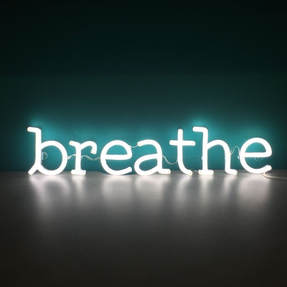
From “Breath” by Danna Faulds
You may have noticed that all yoga classes, no matter the style, begin and reinforce an emphasis on intentional breathing. Teachers that weave Sanskrit (the ancient language of India in which classical yoga texts are written) into their classes will refer to this focus as Pranayama breathing.
Pranayama is defined as the regulation of the breath through certain techniques and exercises. In Sanskrit it is derived from prāṇa "breath" + āyāma "restraint."
Another similar translation of the concept describes prana as the life force or breath sustaining the body; with ayama translating to “extend or draw out." Together two mean breath extension or control.
"In many ways, the cosmic energy that is Prana corresponds to that of modern nuclear physics, which regards all matter as energy ‘organized’ in different ways. This is Prana with a capital P. It is Prana that knows no boundaries. Its source is the energy of the universe, that which is unchanging within you, your very soul, and it feeds your energy body, what the ancient texts call the pranamayakosha. Prana (small p) refers to the energy in the atmosphere – oxygen-rich air. This prana, also known as vaya, feeds the physical body, what the ancient Yogis called the annamayakosha.
What does knowing how to breathe look like? It is breathing that moves like a wave through your body, originating in the diaphragm rather than the thoracic region of the chest. It is full and deep and calm. To breathe this way, the body must be relaxed. When we consciously tense the muscles and hold the breath, there is a relaxed feeling that accompanies the release. So the simplest way to relax is by contracting the muscles while holding the breath, then letting the muscles and breath release completely."
Amy Weintraub
If you are a beginner to pranayama techniques, check out this in-depth Breathing Lessons article online that includes instructions for several variations on breathing exercises you can include with your home yoga practice.
 RSS Feed
RSS Feed